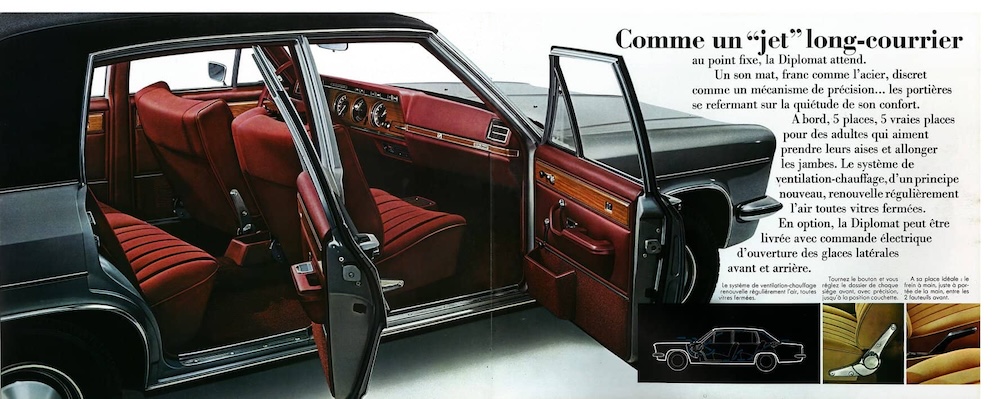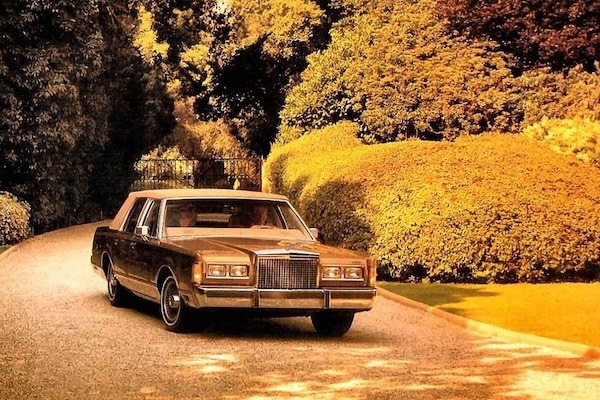In the postwar years Opel was playing the role of a steady provider. Kadetts, Rekords and Olympia models kept German families moving with dependability. They were best sellers in the European market. But by the early 1960s the company had a gap. Mercedes-Benz was building prestige, BMW was sharpening its tools and Ford was busy selling Taunuses to everybody who needed a car. Opel realised they needed something larger, more impressive and something that would demonstrate it could be more than General Motors’ European division. The result was the KAD range, a trio of full-size saloons launched in 1964 under the names Kapitän, Admiral and Diplomat.
The hierarchy was deliberate. The Kapitän was the most accessible, a solid and well-equipped executive saloon that was known to people, as it was in production since 1938. Above it the Admiral added refinement, more space and thicker luxury. The Diplomat sat at the top, a car that transported ministries and company boardrooms. There were hints of America with these cars, especially in their proportion, heft and available V8 power.
Detroit in Rüsselsheim
The real talking point arrived with the Diplomat. Beneath its serious styling lurked American hardware. Buyers could specify Chevrolet’s small-block V8, the 283 and later the 327. Suddenly an Opel could offer great torque and the ability to cruise autobahns at high speed. For European buyers accustomed to six-cylinder Mercedes or Peugeot diesels this was an intoxicating proposition. The Diplomat V8 was potent, almost like a sports saloon.
Opel kept its lines formal. The KAD cars were large, square shouldered and understated. They were designed to look at home outside ministries and embassies. Even though they were built for people with differing amounts of cash in their pockets, all of them had regal long bonnets, restrained brightwork and cabins trimmed with wood veneer and deep seats. Opel, in the end, was careful not to frighten off conservative buyers who valued discretion.
A Market That Never Quite Appeared
For all their ambition the KAD models never truly broke through. Germany in the 1960s was not America. Large saloons had a limited audience. Mercedes had already claimed the default position for prestige transport, its three-pointed star carrying weight that Opel could not match. Buyers who could afford a Diplomat often chose the safer bet of a Mercedes 250 SE or 300 SE, even if the Opel offered more power for less money. Fleet buyers and government ministries remained cautious. The KAD cars developed a reputation for comfort and reliability, but not for exclusivity.
Evolution
The first generation lasted until 1968 before being replaced by the KAD B models. These were sleeker, more modern, with tidier proportions and a stronger sense of European identity. Engines ranged from six-cylinder units to the Chevrolet V8. The Diplomat was offered as a coupe, a grand machine with bodywork built by Karmann, long and elegant and undeniably exotic in the Opel world. It was a car that demonstrated just how far Opel was willing to push, but the audience was small. High running costs, limited dealer enthusiasm and the pull of Mercedes meant the coupe became a rare bird almost instantly. These cars also provided General Motors with a European test bed for transplanting American engineering into continental contexts. While Ford relied heavily on its Cologne operations to build European designs, GM was more willing to blur lines between continents.
Why They Mattered
In pure sales terms the KAD cars were poor performers. The Kapitän and Admiral kept Opel’s flag flying in the executive segment, while the Diplomat carved out a niche as an outsider’s alternative to Mercedes. Yet their importance lies in symbolism. They allowed Opel to explore scale and luxury, to understand the engineering demands of building a flagship. They gave Opel engineers experience with big engines, automatic transmissions and the refinement levels demanded by buyers at the top. Lessons learned with the KAD models would filter down into later generations of Senator and Monza, cars that continued Opel’s prestige line well into the 1980s.
Today the KAD range is a curiosity. The Diplomat V8 coupe, with fewer than 350 examples built, is the crown jewel, a car so rare that it surprises even hardened Opel fans when one appears. Values have begun to rise as collectors recognise their significance, yet they remain far more affordable than equivalent Mercedes of the period. They are different Opels, the kind we have not seen since.
By the late 1970s it was clear the experiment had run its course. The KAD models were phased out, replaced by smaller cars that aligned more closely with European demand. Opel returned to safer ground with the Senator and Rekord. The dream of challenging Germany’s elite was over as the Rekord was too pedestrian and the Senator just didn’t catch up with BMW or Mercedes-Benz. After two generations, the Senator and Senator B, Opel stopped producing luxury saloons.
---
Start your adventure by exploring our wide range of Car Categories. Then, step into the Classic Passion Shop and discover unique products from our partners — must-haves for every true enthusiast looking to elevate their collection!















